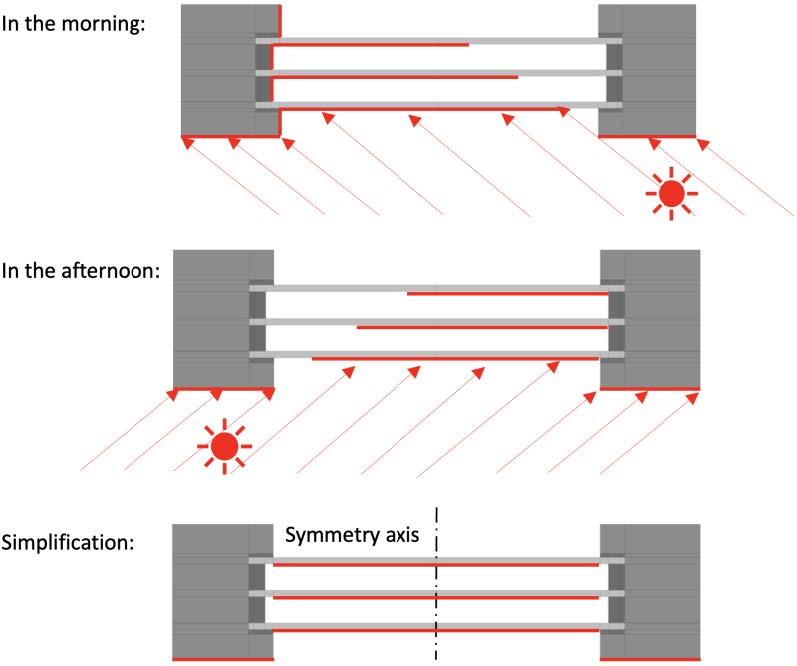Case Studies on the Thermally Induced Stresses in Insulating Glass Units via Numerical Calculation
DOI:
https://doi.org/10.47982/cgc.8.388Downloads

Abstract
In the structural design of facade glazing, various types of loads such as dead weight, wind and climatic loads (pressure differences) must be taken into account. In practice, however, there are many cases of damage that can be attributed to direct solar radiation. In these cases, a so-called thermally induced fracture takes place, which can occur as a result of large in-plane temperature differences within the glass. Due to the increasing complexity of glazing constructions, this load type should be taken into account in future glass design. For this reason, thermal-mechanical investigations, were conducted. Commercially used double and triple insulating glass units were considered as vertical glazing and the solar direct absorptance per glass pane was varied. For numerical calculations, measured temperature data from the German Weather Service and free available Clear Sky model data were used as meteorological input. The results show that solar irradiance, along with temperature, is the driving influence on the thermally induced stress in insulating glass units. The investigations indicate that the inner pane becomes relevant on colder days and the outer pane on warmer days. Results also show, that the level of the outside temperature plays a negligible role for the thermally induced stresses of the middle pane.
Published
Issue
Section
Numerical Modeling & Experimental Validation
License
Copyright (c) 2022 Gregor Schwind, Franz Paschke, Jens Schneider

This work is licensed under a Creative Commons Attribution 4.0 International License.



